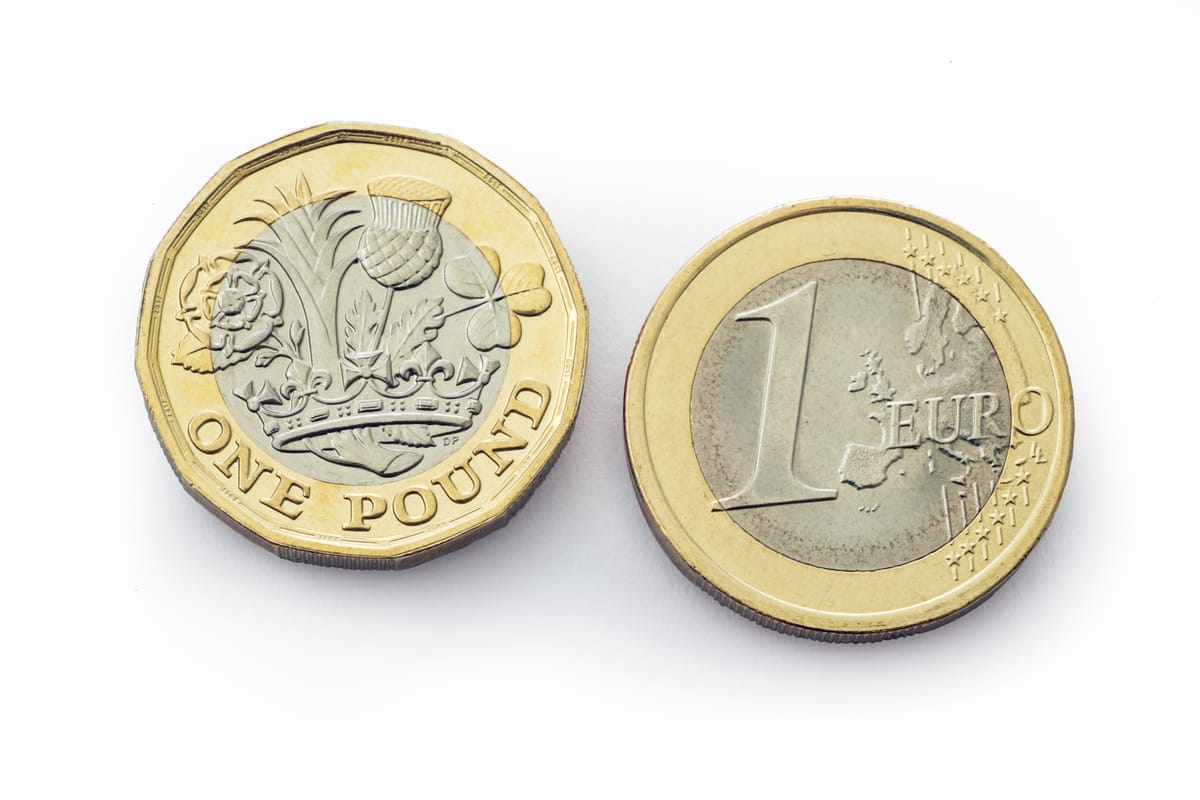GBP/EUR exchange rate week review: pound surges against euro following US jobs data
The pound euro (GBP/EUR) exchange rate leapt to a nine-day high after the latest US non-farm payrolls report weighed on the single currency.

(03/06/2024 to 07/06/2024)
Monday
The pound euro (GBP/EUR) exchange rate softened despite confirmation that the UK manufacturing sector rebounded to growth last month.
The UK currency rebounded into the 1.17-midrange amid a risk-on mood in markets that undermined the safe-haven euro – a shift in investor sentiment was prompted by diminishing US Federal Reserve interest rate cut bets.
Tuesday
The euro was tepid despite data showing German unemployment rose more than expected in May – underscoring forecasts that Europe’s largest economy will only recover gradual pace this year.
The data’s downward impact on the single currency was muted by investor anticipation of the imminent European Central Bank (ECB) interest rate decision, with the central bank widely expected to begin loosening policy.
The single currency’s resilience, a more cautious market mood and disappointing UK retail data combined to undermine the pound, which ticked down to 1.173 – before recovering.
Contact a currency specialist to discover how they can help you take control of exchange rates.
Wednesday
The pound euro exchange rate climbed to around 1.176 as the ECB prepared to become the first major central bank to cut interest rates this year.
This overshadowed mixed PMI data from the Eurozone, with services activity in Germany exceeding expectations, while activity in the wider bloc eased.
The pound’s upward momentum was stifled by slowing UK service sector growth as inflation pressures decelerated to a three-year low. The S&P Global UK services PMI survey scored 52.9 in May, down from 55.0 the previous month, with the rate of expansion slowing to its weakest since November.
Economists believe easing price increases could influence Bank of England (BoE) policymakers as they weigh up a potential interest rate cut on 20 June.
Thursday
The pound edged lower against the euro following the ECB’s unsurprising decision to lower interest rates for the first time in eight years. However, having cut borrowing costs by 25bps in line with forecasts, it reiterated its plan to apply a data-driven approach to future decisions. Moreover, it stopped short of defining its plan for monetary policy loosening.
With the pathway for future cuts unclear and influential data from the UK still thin on the ground, the single currency firmed.
Friday
The pound euro rate traded sideways following the publication of downbeat German data, before jumping to a nine-day high around 1.177 as the latest US non-farm payrolls report hit the headlines.
The single currency couldn’t consolidate its gains following the ECB’s hawkish rate cut, which saw the central bank push back on expectations for future cuts. While this kept the euro afloat, shrinking industrial production in Germany in April put a lid on its upward potential.
However, a sudden appreciation in the dollar applied downward pressure to the euro due to its negative correlation with the US currency.
The dollar was buoyed by the latest non-farm payrolls report which showed the US labour market gained 272,000 jobs in May, far more than the 180,000 rise forecast by economists. The figures pushed back market expectations for the timing of Federal Reserve rate cuts - a widening divergence in monetary policy between the ECB and Fed that further dented the euro.
The pound remained subdued amid an ongoing UK economic data lull and a mixed market mood that stymied the risk-sensitive UK currency.
The pair settled at 1.176 as the week ended.
Looking ahead
The UK economic calendar springs to life next week with the publication of some market-moving data. If the latest labour report on Monday signals a slowdown in the jobs market the pound could weaken. April’s GDP figure hits the headlines on Wednesday, with the print forecast to show growth at just 0.2%, which might not be enough to support the UK currency.
